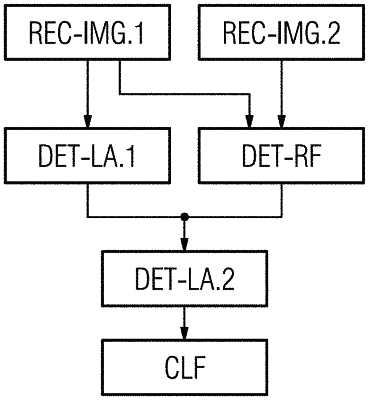| CPC G06T 7/0016 (2013.01) [G06T 7/0014 (2013.01); G06T 7/62 (2017.01); G06V 10/25 (2022.01); G06V 10/454 (2022.01); G06V 10/82 (2022.01); G06T 2207/10116 (2013.01); G06T 2207/20081 (2013.01); G06T 2207/20084 (2013.01); G06T 2207/30096 (2013.01)] | 14 Claims |

|
1. A computer-implemented method for classifying a lesion, the computer-implemented method comprising:
receiving a first medical image of an examination volume, the first medical image corresponding to a first examination time;
receiving a second medical image of the examination volume, the second medical image corresponding to a second examination time, different from the first examination time;
determining a first lesion area corresponding to a lesion within the first medical image;
determining a registration function based on a comparison of the first medical image and the second medical image;
determining a second lesion area within the second medical image based on the registration function and the first lesion area;
applying a trained classifying function to first input data and second input data, to generate output data, the first input data being based on the first lesion area and the second input data being based on the second lesion area, wherein
the trained classifying function is a recurrent neural network,
the first input data and the second input data are independently used as input data for the recurrent neural network,
information from applying the recurrent neural network to the second input data is stored within a hidden state and is used as additional information when applying the recurrent neural network to the first input data, and
the output data of the recurrent neural network depends on the hidden state; and
determining a lesion classification based on the output data.
|